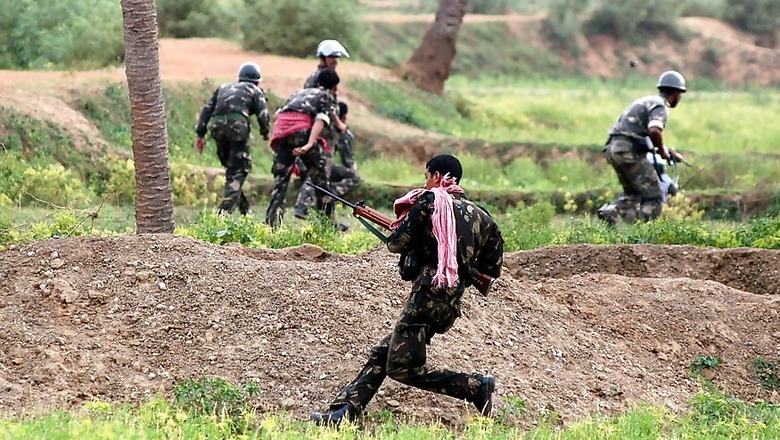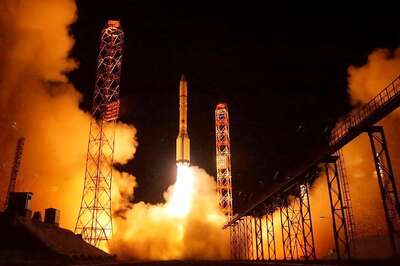
views
New Delhi: Sunday's encounter between security forces and Naxals, in which bodies of 16 insurgents have been recovered so far, is the biggest single-day setback that the extremists have suffered this year. A similar operation was carried on March 10 at the Telangana-Chhattisgarh border.
Sources in the intelligence unit and senior police officers described Sunday's encounter as a massive development. "I believe this is a huge game-changer and will boost the morale of our forces. This will be a big hit for the Naxals. They will now need a lot of time to regroup," said Bastar DIG Sunder Raj.
It is not just the loss of manpower, Sunday's encounter comes at an especially opportune time for the forces. This is the time — from the third week of April to the last week of May — when Maoists make most of their money through the tendu patta (Coromandel ebony or East Indian ebony) business. The illegal harvesting and sale of tendu patta leaves, which are used to make bidis, is the biggest source of funds — annually Rs 80 to Rs 100 crore — for the Maoists.
And Gadchiroli, where the encounter took place on Sunday, is the transit point from where tendu patta leaves are distributed to Telangana, Maharashtra, Odisha and Chhattisgarh. News18 travelled to these forests last year and dug deeper into the business.
There are four reasons why Sunday's encounter is a massive blow to the Maoists:
— Security forces have hit right at the financial foundations of the Maoists. It will be very difficult for the extremists to regroup and take control over their illegal business while the clock is ticking on the month-long window they have to harvest and transport tendu patta.
— Forces have also afflicted huge damage to the already dwindling manpower in Maoist ranks, where little or no recruitment is happening right now. Most of the operatives responsible for recruiting educated youth in cities have either been caught or have surrendered. Local Adivasis (tribal) are also opposing conscription into extreme left ranks.
— There are strong rumours of a rift between politburo members of CPI(Maoist) at several levels. In Bastar, the rift is between the Politburo, most of whose members are from Telangana, and local cadres voicing their anger against nepotism. Sunday's encounter is expected to foment this divide further.
— While Naxals are getting no new recruits, most of the members of Politburo, CPI(Maoist)' top decision-making body, are now over sixty and unwell. Ganapathy, the chief of CPI(Maoist) and one of the most wanted man in India, is unable to move and cannot actively energise or direct ground cadres.
But this doesn't necessarily take away from what Maoists have already done or can do.
Narendra Modi was the first Prime Minister to visit Bastar's Bijapur district. Security arrangements, the likes of which had never been seen in the area, were put in place much before Modi's address on April 15.
However, despite a 10,000-strong security cordon placed 10 days in advance, Maoists managed to kill two DRG soldiers five days before Modi was scheduled to speak and barely a few kilometres from his podium.
In the same district, just a month back, the extremists killed nine CRPF soldiers by blowing an IED at a vehicle ferrying security personnel. Three days later, they abducted and killed a contractor and set scores of vehicles on fire.
What Naxals have lacked in firepower and direct confrontation, they more than make up for through a meticulous, silent expansion drive. According to sources in the intelligence department, and based on the documents recovered from their hideouts, Naxals are quietly expanding up North towards Balaghat, where they in the 90s used to wield great influence and into newer districts like Dindori and Mandala.
The Vistaar Dalam unit of CPI(Maoist), which is meant to expand the red corridor, has been seen in several districts of Jharkhand as well. Documents foreseeing an expansion in these areas were recovered as far back as in 2006. Their presence in the area now shows the level of planning and single-minded execution of their goals.
What truly makes the influence of Naxals seem menacing and threatening is the simultaneous movement that has unfolded in areas like Pathhargarhi. News18 had a travelled to these areas, including Madhya Pradesh's Dindori and Mandala, where spontaneous exclusionist, Adivasi-driven movements have broken out in the last four months.
In Jharkhand, where Naxals still enjoy a sizeable area of influence, this movement has taken extremely aggressive overtones. In many areas, local Adivasis have boasted of preventing CRPF and local police from visiting Naxal strongholds.
Despite having dealt a severe blow to Maoists, security forces won't let themselves be caught off guard. This is the year when the crucial assembly election is due in Chhattisgarh. The actual battle between Maoists, who want to derail elections at any cost, and security forces, who have their most challenging months ahead to prepare for, may have just begun.




















Comments
0 comment